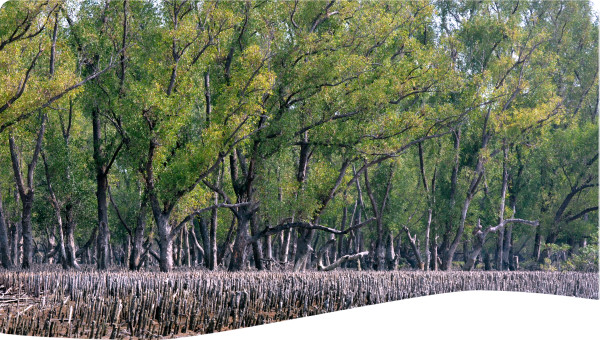The Mulloon Rehydration Initiative (MRI) demonstrates how a catchment-scale approach to drought resilience can deliver economic, environmental, and cultural returns. Spanning over 23 properties in southeast Australia, the MRI applies nature-based interventions, Traditional Owner partnerships and long-term monitoring to restore degraded water systems. Guided by cost–benefit analysis, the UNCCD and Australia’s National Drought Agreement, the MRI offers a replicable model for natural capital investment, adaptation planning and policy reform in the face of increasing drought risk.
Australia is the driest inhabited continent on Earth. Climate projections indicate that drought frequency, severity and duration are expected to increase under all global warming scenarios. According to Australia’s 2024 National Climate Risk Assessment, “time spent in drought is likely to increase across most of the country… particularly in southern and eastern areas,” with profound implications for food systems, water security and ecosystems.
The economic consequences of drought in Australia have historically exceeded $15 billion per decade, with compounding effects on regional communities, productivity, biodiversity and mental health. Without urgent action, climate-exacerbated degradation risks becoming economically and ecologically irreversible.
In the Mulloon Catchment (Southern Tablelands, New South Wales), decades of land clearing, livestock grazing and disrupted hydrology had caused severe gully erosion, stream incision, loss of riparian vegetation and declining water retention. Baseflows dried up. Topsoil washed away. Farmers faced declining productivity and an increasing exposure to drought.
The Mulloon Rehydration Initiative (MRI), launched in 2016 by Mulloon Institute, emerged from decades of local knowledge and international best practice. It seeks to demonstrate how landscape-scale rehydration can address multiple systemic challenges – drought, degradation, declining farm profitability and community disconnection.
The Initiative aligns with the UNCCD’s Economics of Land Degradation (ELD) approach and the 2024 UNCCD Global Report on the Economics of Drought, which highlights that $1 invested in drought resilience yields up to $6 in co-benefits or avoided losses. The Initiative also aligns with Australia’s National Drought Agreement (a policy framework) and the Future Drought Fund (investment mechanism), positioning the MRI as both a science-led demonstration and a nationally relevant proof-of-concept.
The mission of the MRI is to build healthy, productive, drought-resilient landscapes by restoring hydrological function at the catchment scale – leveraging natural infrastructure, community partnerships, regenerative land management and scientific monitoring.
Photo by Christos Zoumides
The Mulloon Rehydration Initiative was designed as a collaborative, cross-sectoral landscape repair program.
Actions taken included:
- Strategic restoration of water flows using nature-based interventions such as leaky weirs, grade-control structures and riparian revegetation.
- Engagement with over 20 landholders to implement farm-scale Property Management Areas (PMAs) aligned with whole-of-catchment hydrological repair.
- Deployment of scientific monitoring equipment, including groundwater piezometers, stream gauges, vegetation surveys and remote sensing analysis.
- Co-development of natural capital frameworks and cost-benefit analysis (CBA) tools to assess economic returns on investment in rehydration.
- Collaboration with national agencies, local Landcare groups, universities and First Nations knowledge holders.
- Integration with the Mulloon Living Laboratory and STREAM (Science-Technology-Research-Ecology-Assessment-Monitoring) business unit section for long-term data collection and public benefit assessment.
- Initiation of the LiFT (Landscape Function Toolkit) – a digital tool currently under development to support landholders and rangers in monitoring landscape rehydration through mobile data collection, visualisation and standardised reporting.
The MRI’s design embraced the complexity of socio-ecological systems: integrating farm productivity goals with public ecological values, supported cross-scale learning and aligned implementation with both community priorities and national adaptation goals.
The MRI has achieved measurable and systemic results across ecological, economic, social and governance domains:
Environmental & Ecological:
- Stream health has improved with reconnected floodplains, restored baseflows and increased wetland function across key reaches.
- Groundwater levels in monitored piezometers show upward trends during wet periods and slower recession rates during dry periods.
- Vegetation cover increased significantly in riparian and adjacent paddock zones, reducing erosion and boosting pasture productivity.
- Biodiversity is improving: native grasses, frogs, birds and macroinvertebrates have returned to previously degraded zones.
Economic:
- The CBA estimated a benefit–cost ratio of at least 3.6:1 over 10 years for landholders.
- Pasture growth improved by 20–40% in rehydrated zones during dry seasons.
- Reduced erosion and nutrient loss saved thousands in input costs per property.
- New economic opportunities emerged from carbon, biodiversity and stewardship markets.
Social & Cultural:
- Collaboration increased social cohesion, trust and shared learning across more than 20 landholders.
- The initiative empowered local landholders to become educators and stewards, hosting delegations from across Australia and abroad.
- First Nations involvement increased mutual understanding and enriched cultural landscape management.
Governance & Policy Impact:
- The MRI contributed to shaping the national drought adaptation strategy, informing Australia's Future Drought Fund and Drought Resilience Adoption and Innovation Hubs.
- Replicability: the Landscape Function Toolkit (LiFT) and the MRI model are now being applied to new regions including the Horn of Africa, where landscape rehydration is being trialled with similar principles.
Challenges remain, including securing long-term funding for monitoring, and scaling interventions in highly degraded or complex tenures. However, the MRI continues to serve as a world-class demonstration of how strategic, inclusive, evidence-based rehydration can mitigate drought risk while enhancing livelihoods.
Nature-based drought interventions can deliver strong ecological, economic and social co-benefits when applied at the landscape scale.
Long-term monitoring and valuation frameworks are critical to making the economic case for drought resilience investments.
Participatory approaches enhance adoption, social licence and impact longevity, especially where landholders and community groups are engaged.
Digital tools under development (e.g., LiFT) and national climate risk data provide the foundation for scalable and replicable interventions in drought resilience.
National climate risk assessments can support targeted investment by identifying priority areas and justifying proactive adaptation funding.

